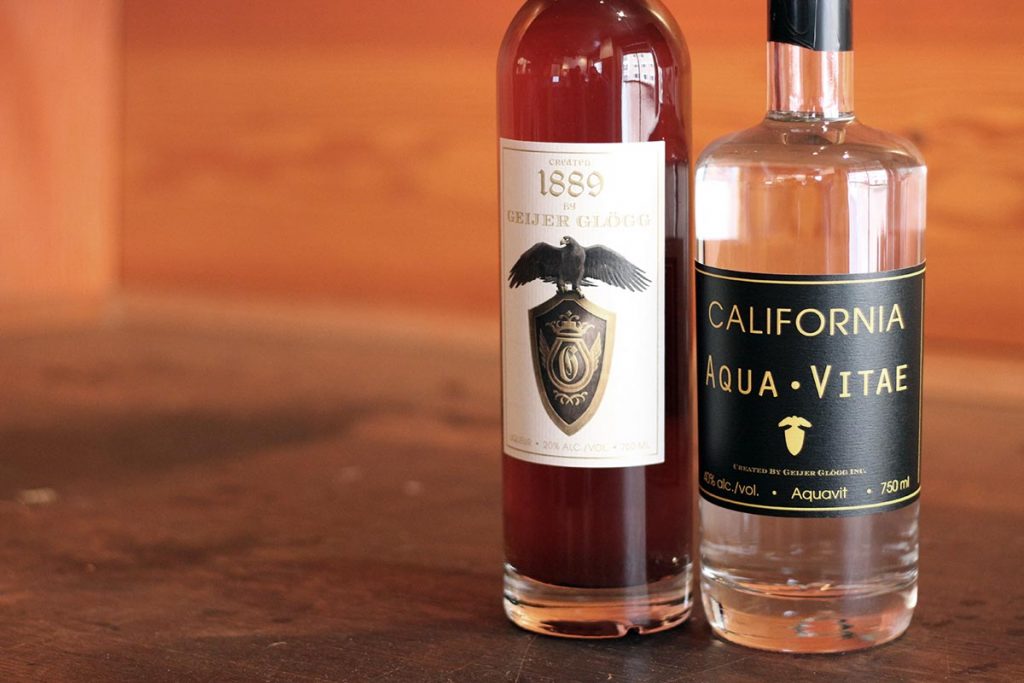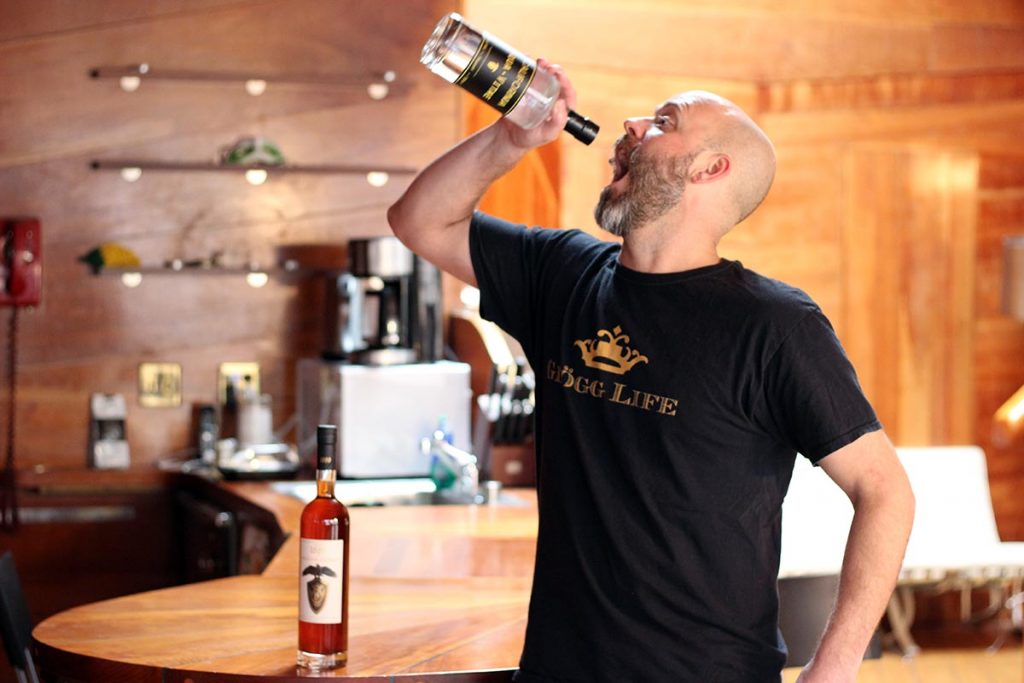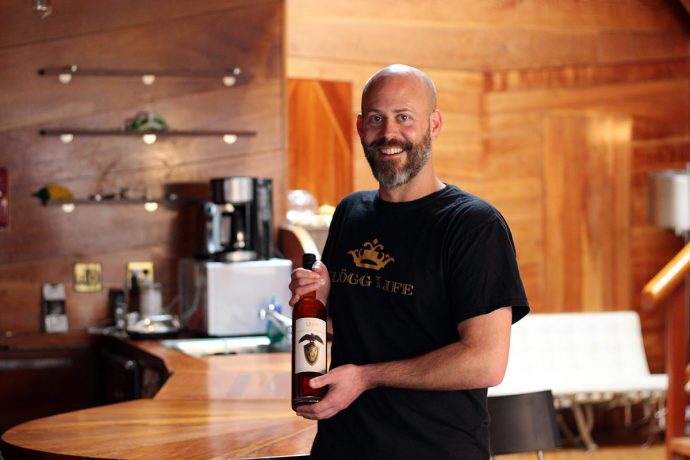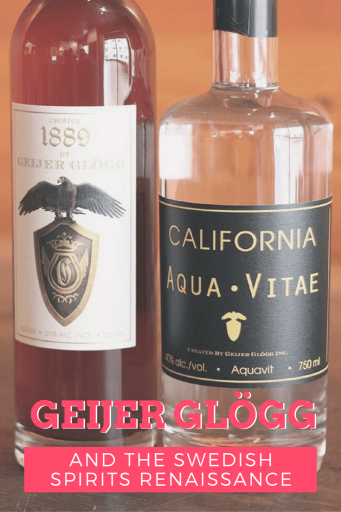Though it has become increasingly popular in recent years, introducing a foreign spirit category to the US market has always been a challenge. Going all the way back to tequila during and after Prohibition (and probably even further than that), when it was reportedly marketed as “Mexican brandy” north of the border, we’ve always been a stubborn bunch when it comes to adopting drinks from other countries.
Regardless, the last decade has seen a pretty huge popularity boost for previously obscure booze, from shochu and baijiu to hundreds more vermouths, mezcals, and amari than our shelves have ever seen. For craft spirit producer Martin Geijer (pronounced “YAY-er”), that has resulted in a ripe market for his classically-styled Swedish spirits and liqueurs. Geijer Glögg, and now California Aqua-Vitae, have found a foothold in San Francisco and beyond that has surprised even him.
What is Glögg?
Before we dive into the story of Geijer Glögg, we should probably explain what it is. Glögg (pronounced “glug”) is a traditional Swedish drink that’s typically enjoyed in the fall and winter, especially around Christmastime. It’s made by infusing herbs and spices in wine or a neutral spirit, then adding some sugar to soften it up. Usually, it’s served warm.
For many Swedes, glögg represents a nostalgic family tradition. But for the Geijers, it’s more of an obsession. “A lot of families make their own glögg, but I don’t know if they’re typically as religious as we’ve been,” he told us over a glass of aquavit, sporting his signature waxed mustache and a t-shirt that read “Glögg Life.”
“It’s a very personal thing, though. Every Christmas morning, there’s the smell of glögg, because that’s when my dad makes it. I tend to start making it much earlier, in October when you feel the first nip in the air, because we always consumed it hot and it warms you right up.”
The Geijer Family Recipe

Geijer Glögg and California Aqua-Vitae
When Geijer first came to the United States, though, he found that his beloved holiday tipple was hard to come by. “I’ll tell you, in 1994 it was really hard to find some of the spices. Cardamom, whole green fennel seeds—this was before Whole Foods, so you needed to go to Indian bazaars and places like that to find the spices, which was kind of interesting. Now it’s super easy, you can just order everything online.”
Eventually, he was able to cobble together the ingredients for his great-grandmother’s recipe, which had been passed down through his family for nearly a century. “It’s cinnamon, cardamom, and cloves, those are the spices. Then you have almonds and raisins for that midpalate, and then bitter orange peel that you catch at the end. Then it’s sweetened with cane sugar, and that’s it.”
According to Martin, the use of a distilled neutral spirit rather than wine is a bit of an uncommon choice, and one that stems from his family’s hardy roots. “It’s my great-grandmother’s recipe—so I’m the fourth generation—and she had a still in the back. That’s where she got her moonshine from, and that’s why she made it spirit-based instead of wine-based,” he explained, laughing. “We didn’t have a still when I was growing up, so we just bought vodka to make it.”
Taking Glögg to the Big Time
After his first stint stateside, Geijer found himself living in places as far-reaching as Australia, New Zealand, and Switzerland, as well as some time back in his native Sweden. But he had fallen in love with California, and eventually returned around 2010.
“What I’ve always done when traveling is serve this glögg to everybody I meet. It’s been pretty universal that people love the taste profile, no matter where they’re from. So if you’re Japanese, if you’re South African, if you’re Swedish, it doesn’t matter—you’ll like it.”
Inspired by their family recipe’s wide appeal, Martin began discussing with his father and brother how they might turn it into a business. He decided to write a letter to the Alcohol and Tobacco Tax and Trade Bureau—the organization that grants distillery licenses in the United States, better known as the TTB—asking if they might “bend a few rules” and allow him a temporary permit to produce test batches of glögg.
“I was a little naïve there in the beginning,” he laughed. “They said no, of course, but they were very helpful. They sent me a long email back saying, here’s what you can do. They gave me lots of suggestions for how I could bring my product to market, and the best one was that they said I should try working with a local distillery. They even gave me a list.”
At the top of that list, mainly because it was the closest to Geijer’s apartment, was the legendary St. George Spirits in Alameda. Knowing virtually nothing about the spirits industry, he set up a meeting with master distiller Lance Winters to see how they might work together.
“I’d made glögg pretty professionally at home—I mean, it looked like a meth lab at my house,” Geijer said with a chuckle. “I had this commercial wine filter, I’d make like 20 gallons at a time, and I’d really scaled everything up over the years. I already had the labels hand-drawn and printed, and I brought all that over to St. George, so they immediately saw that I was really serious about it. They started working with me immediately, and they thought it was a really exciting product.”
Glögg in the American Market
Despite both parties’ excitement, there remained the challenge of marketing glögg—a generally unknown category in the US—to people who had never heard of it. Needing to simultaneously educate consumers and sell bottles is a perennial problem for importers and foreign distillers.
“The first thing Lance said when we met was that he wanted to taste it cold. I almost gasped. I was like, ‘No! This is glögg! You can’t try it cold!’ He said, ‘Eh, I just want to see what it does.’ I thought, oh my God, I’ve never tasted it cold, I have no idea how it’s going to taste. So we had a bit of it cold, and we were both surprised to find that it actually tasted pretty good.
“We had planned to market it primarily to the Swedish community, as a winter product, served warm. We had no other concept of it,” Martin explained. “So, while we were working, Lance started making some cocktails with it. I was like, what? Cocktails with glögg? I’ve never heard of such a thing. And, well, now that’s 95% of our business. It turns out that it’s a great application for glögg, and we had a brand new idea.”
View California Aqua-Vitae on Bevvy
Though it’s been picked up by a number of retailers and regional bars as a cutting-edge cocktail ingredient, Geijer Glögg certainly still benefitted from the relatively large Swedish community in San Francisco. “There are a lot of Swedish immigrants here, which I didn’t know until I started making the glögg,” Martin said. “Then they came out of the woodwork.”
The same trajectory seems to be playing out with his latest product, California Aqua-Vitae, a traditional Swedish aquavit with added botanicals from the California coast. Bay Area Aquavit enthusiasts (yes, apparently there are many) were the first to pick it up, and now its official launch has coincided with a growing domestic market for the category.
“It definitely seems like I picked a good time to release it,” he told us. “When I released the glögg—I think that was October 2012—it really hit the beginning of craft spirits taking off in the mainstream, at least for bars and restaurants. They were interested in ordering these kinds of products. So, that was just pure dumb luck. And again with the aquavit, I’ve been working on this recipe for eight years, and now there are three or four distilleries just in California that are making it. It’s crazy.”
In short, it seems like Geijer can’t help but have good timing.
Looking Forward
And yet, like so many other craft spirit producers we’ve met, Martin isn’t content with just one or two flagship products. Over the next year or two, he intends to release a smattering of eclectic recipes he’s been working on behind closed doors whenever inspiration hit.
Currently on the shortlist are three products: an amaro, an 80-proof version of his glögg known as a “glöggschnapps,” and an apricot liqueur. The glöggschnapps is fairly straightforward, and utilizes essentially the same blend of herbs and spices as the standard stuff. The other two, though, have taken a bit more experimentation.

Martin swigs some aquavit
“The amaro is really herbaceous,” Geijer explained. “The first batch had 19 different herbs and roots and other ingredients in it, and then I ended up doing infusions of about 40 different ingredients and trying everything individually. So, the new batch has 21 in total, and I dialed up the bitterness a bit. It has a lot of roots, herbs, and minimal sugar.”
The apricot liqueur proved somewhat harder to nail down.
“I did my first test with dried apricots, because they were out of season, and it tasted like crap,” he admitted, laughing. “I found some dried apricots that I got over at Whole Foods, and that batch was decent. It was drinkable. At least I could see that it was doable. But the real thing is made with really fresh, sun-ripened apricots, and you can easily drink it on its own.”
For the Fun of It
Though he never intends to stop experimenting, Martin also understands that running a small spirit brand doesn’t allow for an endless portfolio. He envisions the Geijer brand covering no more than ten products, but that’s still a little ways off. For now, he’s content to simply do what makes him happy.
“You really have to approach this like a business, which, honestly, I kind of hate,” he told us. “I’m in this to have fun. I love this product, and the feedback has been great. It all comes from the love of glögg. That’s our family tradition, that’s our pride.
“Plus, the people that you meet are fantastic,” Martin continued. “I’ve never had so much fun. I did over a decade in corporate finance for a medical devices company, and oh my God is it different. It’s all industry secrets, nobody helps each other, there’s backstabbing left and right. And then you come into the spirits business, and everyone will tell you their secret techniques and recipes and profit margins,” he said, laughing. “And it’s a really great, open community. How can you not want to be in that industry, where people genuinely want to help each other?”
Photos: Will Shenton, Bevvy




